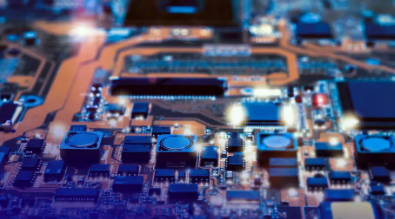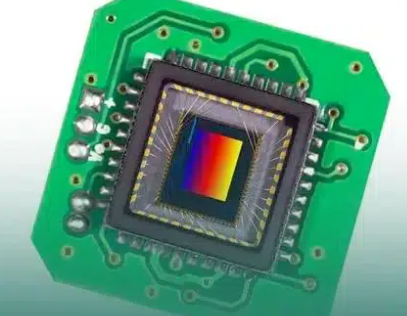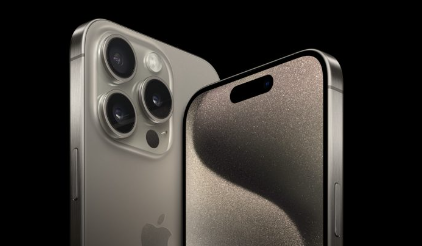- Ameya360 Component Supply Platform >
- Trade news >
- What types of chip packaging substrates are there?
What types of chip packaging substrates are there?
In the field of semiconductor packaging, many packaging types use packaging substrates, such as BGA (Ball Grid Array), PGA, QFP, CSP, SiP, PoP, etc. Different types of packaging use different packaging substrates. So what are the common packaging substrates? Keep reading!

What is the function of packaging substrate?
The packaging substrate has the following main functions in the package: electrical connection, mechanical support, heat dissipation, protection, etc.
What types of packaging substrates are there?
According to the material of the substrate, it is divided into rigid substrate and flexible substrate.
Rigid substrate refers to a substrate that has strong rigidity and cannot be bent. Flexible substrates refer to substrates that can be bent and folded. Rigid substrates have a fixed shape and form, while flexible substrates are thin and more flexible.
What type of material is the rigid substrate made of?
Common rigid substrate materials: FR4, BT, ABF, ceramic, etc.
FR4
FR4 is one of the most commonly used material types in printed circuit board (PCB) manufacturing. “FR4” stands for “Flame Retardant Type 4”. It is a composite material made of fiberglass cloth impregnated with epoxy resin, then hot pressed and cured. It has the characteristics of good flame retardancy, high mechanical strength, excellent electrical insulation performance and good thermal stability.
BT
BT material, which takes its name from its main chemical components: Bismaleimide and Triazine, is a more advanced and higher-performance epoxy resin substrate and has become the lamination of choice for many substrate manufacturers. BT material has a high glass transition temperature, usually higher than ordinary FR4 materials; low thermal expansion coefficient and dielectric constant; good insulation, etc. BT is the standard substrate material for BGA packages and can also be used for CSP packages.
ABF
ABF (Ajinomoto Build-up Film) is a highly rigid and highly durable material used in high-end chip packaging such as CPUs and GPUs. It was developed by Ajinomoto Company. It is a laminated film material and is usually used as an inner insulating material for packaging substrates.
Ceramics
Commonly used ceramic materials include aluminum oxide (Al2O3), aluminum nitride (AlN), beryllium oxide (BeO), silicon carbide (SiC), etc., which are relatively early laminated materials. Ceramic materials are first obtained in the form of powder through grinding to obtain particles of suitable particle size, and then are made through shaping, metallization, lamination, cutting, high-temperature sintering, grinding and polishing, nickel immersion, gold immersion, etc. They have a certain degree of brittleness and are suitable for high-frequency applications in chip products with high power and high reliability requirements.
What types of materials are used for flexible substrates?Common flexible substrate materials: PI (polyimide), PEEK (polyetheretherketone), PET (polyester), PDMS, etc.
What are the advantages and disadvantages of flexible substrates?
Advantages:
Flexibility and Conformity: Flexible substrates can conform to various shapes and surfaces, allowing them to be used in applications where rigid materials wouldn’t work. This flexibility enables innovative designs and applications in curved or irregular surfaces.
Lightweight and Thin: They are generally lighter and thinner than rigid substrates, which can be advantageous in applications where weight and thickness are critical factors, like portable devices or wearable technology.
Durability against Bending and Folding: Flexible substrates can withstand bending and folding, making them suitable for applications where frequent movement or deformation occurs without compromising their functionality.
Cost-Effectiveness: In some cases, flexible substrates can be more cost-effective than rigid alternatives, especially in large-scale manufacturing where materials and production processes might be less expensive.
Disadvantages:
Less Structural Support: Their flexibility can also be a disadvantage when structural support is necessary. This can limit their use in certain applications where a rigid base is needed for stability or mounting.
Limited Heat Resistance: Some flexible substrates might have lower heat resistance compared to rigid materials, which can be a drawback in applications where high temperatures are involved.
Reduced Electrical Performance: In certain electronic applications, flexible substrates may have limitations in terms of electrical performance, such as higher signal distortion or lower heat dissipation compared to rigid substrates.
Susceptibility to Damage: While flexible substrates are resilient to bending and folding, they might be more susceptible to damage from punctures, tears, or abrasions compared to rigid materials.
What are the advantages and disadvantages of rigid substrates?Advantages:
Stability and Durability: Rigid substrates are often more stable and durable compared to flexible ones. They maintain their shape and structural integrity well, making them suitable for various applications.
Support and Rigidity: They offer a stable surface for various processes like printing, painting, or mounting components. This stability can ensure precise and accurate outcomes in manufacturing.
Ease of Handling: Rigid substrates are often easier to handle during production processes, transportation, and installation due to their solid form.
Improved Performance: In some applications, such as electronic circuits, rigid substrates may offer better electrical performance due to reduced signal distortion and improved heat dissipation.
Disadvantages:
Limited Flexibility: The rigidity of these substrates can be a disadvantage when flexibility is required. They might not conform to curved surfaces or adapt well to uneven shapes, limiting their use in certain applications.
Susceptibility to Damage: Being rigid, they are more prone to cracking or breaking under stress or impact compared to flexible substrates. This makes them less suitable for applications where impact resistance is crucial.
Higher Cost: Rigid substrates can be more expensive than flexible alternatives due to the materials used and the manufacturing processes involved.
Transportation and Storage Concerns: Rigid substrates might require more careful handling during transportation and storage compared to flexible substrates, which can be rolled or folded.
Online messageinquiry

Microsoft Unveils In-House AI Chip, Poised for Competitive Edge with a Powerful Ecosystem

What is digital chip? What is analog chip?
- Week of hot material
- Material in short supply seckilling
| model | brand | Quote |
|---|---|---|
| MC33074DR2G | onsemi | |
| CDZVT2R20B | ROHM Semiconductor | |
| RB751G-40T2R | ROHM Semiconductor | |
| BD71847AMWV-E2 | ROHM Semiconductor | |
| TL431ACLPR | Texas Instruments |
| model | brand | To snap up |
|---|---|---|
| IPZ40N04S5L4R8ATMA1 | Infineon Technologies | |
| BP3621 | ROHM Semiconductor | |
| BU33JA2MNVX-CTL | ROHM Semiconductor | |
| ESR03EZPJ151 | ROHM Semiconductor | |
| TPS63050YFFR | Texas Instruments | |
| STM32F429IGT6 | STMicroelectronics |
- Week of ranking
- Month ranking
Qr code of ameya360 official account
Identify TWO-DIMENSIONAL code, you can pay attention to


Please enter the verification code in the image below:
























